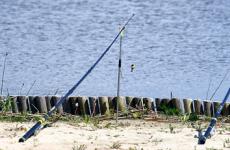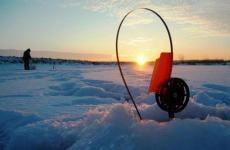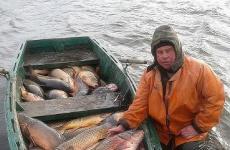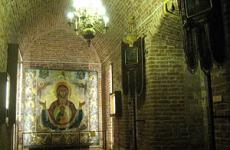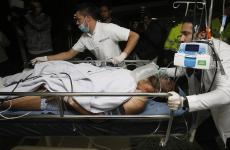Slovenia. Slovenia on a map of Europe Map of Slovenia and Croatia
Slovenia on the map is located in the very center of Europe and borders Austria, Hungary, Croatia, and Italy. Territorial proximity to many European capitals and large cities and a well-developed transport network make Slovenia attractive for busy travel.
Most of the territory of Slovenia is occupied by the ridges of the Eastern Alps and forests, among which beautiful old coniferous, beech and oak forests predominate, which have practically disappeared from the map of the rest of Europe. The coast of Slovenia (obala in Slovenian) is only 40 km long, but many tourists from Italy, Austria, Germany and Russia come to the country’s seaside resorts every year. The capital of Slovenia, Ljubljana, is located almost in the center of the country.
Slovenia Europe
On the map, Slovenia is located in the south of Central Europe and is one of the smallest European countries. Despite this, the diversity of landscapes and the amazing history of the country make it an extremely attractive destination for tourism and travel. In Slovenia, you can relax on the beach, ski, hike or do other outdoor activities, as well as go down into underground caves or enjoy thermal springs. Many natural attractions in Slovenia are considered part of the UNESCO heritage.
Slovenia and the euro

In 2007, Slovenia joined the European Union and since then the official currency of Slovenia has been the euro. As a result of an international tender, Slovenia issued several euro coins with a unique design: these are coins with the image of a stork, which was used in the minting of coins of the previous Slovenian currency; “Princely Stone” for coronation; a drawing by the famous Slovenian postmodernist Ivan Grohar, as well as the highest Slovenian mountain, Triglav. Before joining the euro area, Slovenia used the local currency "tolar", which appeared after the collapse of Yugoslavia.
Resorts of Slovenia on the map
Visa to Slovenia
Slovenia is one of the Schengen countries, so you can visit it with a visa issued by any of the Schengen countries. If you do not have a Schengen visa, then you can apply for a visa to Slovenia by submitting an application at the consular department of the Embassy of the Republic of Slovenia in Moscow or at the Slovenia visa center on the territory of the Russian Federation. To obtain a visa to Slovenia, you will need to provide a foreign passport, a copy of the Russian (internal) passport, a completed application, photographs and insurance, as well as pay a visa fee.
Language of Slovenia
And, since the country is called Slovenia, the language its inhabitants speak is Slovenian. Almost all Slovenians also speak Sebro-Croatian, which was the official language of Yugoslavia, and many also speak good English. Due to the proximity of Italy, Austria and Hungary, many residents in the border regions also speak Italian, German or Hungarian. In the coastal region of Slovenia, Italian is the second official language. In addition, in Prekmurje, a historical region located on the map of Slovenia in the territories of modern Slovenia, Austria and Hungary, there is a regional Prekmurian-Slovenian language that is not officially recognized.
Slovenia is a small, predominantly mountainous country in the Eastern Alps. Its area is 20.3 thousand square meters. km. The country borders Italy, Austria, Hungary and Croatia.
In the west, in the region of the Gulf of Trieste, Slovenia faces the Adriatic Sea. In the north of the state there are Alpine mountain ranges, including the Julian Alps with Mount Triglav, the highest point in Slovenia. In the south of the country is the edge of the Dinaric Highlands. It is here that the limestone plateau with the Postojna Cave, known throughout the world, is located.
Slovenia on the world map online
The capital of the state is Ljubljana.
The temperate continental climate of Slovenia is divided into three climatic zones: Central European, Alpine and Mediterranean. Summer air temperature averages +21 C, winter - 0 C. In the mountains, the best time period is from September to May. The swimming season lasts from June to the end of October.
Many Slovenes speak English, Italian or German.
The country has a very well developed transport network. There are more than 100 border points on the border with Austria and Italy. All major cities have car rental offices. Taxi services are quite expensive.
The time is 2 hours behind Moscow.
In most restaurants, a 10% service tip is included in the bill.
Slovenia is a small, predominantly mountainous country in the Eastern Alps. Its area is 20.3 thousand square meters. km. The country borders Italy, Austria, Hungary and Croatia.
In the west, in the region of the Gulf of Trieste, Slovenia faces the Adriatic Sea. In the north of the state there are Alpine mountain ranges, including the Julian Alps with Mount Triglav, the highest point in Slovenia. In the south of the country is the edge of the Dinaric Highlands. It is here that the limestone plateau with the Postojna Cave, known throughout the world, is located.
Slovenia on the world map online

The capital of the state is Ljubljana.
The temperate continental climate of Slovenia is divided into three climatic zones: Central European, Alpine and Mediterranean. Summer air temperature averages +21 C, winter - 0 C. In the mountains, the best time period is from September to May. The swimming season lasts from June to the end of October.

Many Slovenes speak English, Italian or German.
The country has a very well developed transport network. There are more than 100 border points on the border with Austria and Italy. All major cities have car rental offices. Taxi services are quite expensive.
The time is 2 hours behind Moscow.
In most restaurants, a 10% service tip is included in the bill.
Basic information about Ljubljana

The beautiful, but very small city of Ljubljana is located on the banks of the river. The heart of this miniature capital was the castle of local feudal lords, Ljubljana Castle, located on the right bank. Today this place is definitely included in any tourist program. This is not surprising - it is from here that the view of the whole of Ljubljana can be seen.
The city, which is the main economic and cultural center of Slovenia, has only about 280 thousand inhabitants. Ljubljana spreads its territory over 275 km. sq. But this small space is quite enough to fit a large number of attractions, beautiful and memorable places in one place.
Ljubljana is often visited by European residents; our compatriots are just discovering the beauty of Slovenia. Those who decide to relax here do not need to know the Slovenian language.
Many residents also speak fluent English, but the population that lives near Italy and Austria also speaks German and Italian quite fluently.

A unique feature of Ljubljana is its popularity among students. About 60 thousand of them live here. This is not surprising, because this is where the best university in Slovenia is located - the University of Ljubljana (UL). It is he who is included in the top 5% of academic rankings in the world. Foreigners are also taught various professions here, however, they make up only 4% of the total number of students. The cost of training, by European standards, is low - $2,500 per year.
Tourists are interested not only in photos of Ljubljana, but also in the city’s security level. Travelers can rest easy - according to Reader's Digest magazine, the capital of Slovenia is at the very top of the list of the safest places on the planet.
Tourist map of Ljubljana
The capital of Slovenia, Ljubljana, is a very interesting city. You can book a lot of different excursions and spend a decent amount on it. However, there is a better suggestion - to use a special tourist card. This is a kind of single ticket that allows you to get acquainted with various attractions of Ljubljana on favorable terms.

The electronic smart card is supplemented with a validation chip, which will allow the user to enter certain places without making a payment. You can buy such an electronic card at special information centers, via the Internet or in hotels. Some services offer it with a 10% discount.
Among the features and advantages of the card:
- Duration of use – you can purchase a card for 24, 48, 72 hours. The countdown begins after the first use.
- The card can be used on city buses during the entire validity period of the card. You can use the card for sightseeing or other privileges once.
- Includes entry into 19 museums, the Zoo, galleries, etc.
- Allows you to use free wireless Internet for a day.
- Free use of the network in STIC.
- Free ride by bicycle (4 hours), tourist boat, cable car.
- Rent a digital guide and free regular tour of the city accompanied by a guide.

- The full cost of the card for 24 hours is 27.00€ (for children under 14 years old – 16.00€),
- 48 hours – 34.00€ (children – 20.00€),
- 78 hours – 39.00€ (children – 23.00€).
When purchasing on the website www.visitljubljana.com, a 10% discount is offered on all types of cards.
Every day, every active tourist who visits attractions, museums and memorable places, and also moves around the city by bus, can save up to 100 euros.
Transport in Ljubljana
Numerous photos of Ljubljana (Slovenia) encourage newly arrived tourists to explore its many attractions. This means that you will need to use various modes of transport in order to be on time everywhere and study everything thoroughly.
The city has a good location - it is located at a kind of crossroads of tourist roads.
The place is located near the Adriatic Sea, on the way to Venice and Vienna. It is this fact that often forces tourists to stop by the city for a couple of days for a passing inspection and acquaintance. Ljubljana has every reason to boast of its excellent roads and transport links. Travelers will not have any difficulties choosing a method of transportation.

It is from this place that many tourists begin their acquaintance with the local region. Just a 20-minute drive separates the main airport of Slovenia (Jože Pučnik) from the city of Ljubljana. Flights to various countries around the world are most often organized by the Slovenian airline Adria Airways - it is quite reliable, it is among the members of the international Star Alliance network.
You can get to the city from Ljubljana Airport by regular bus No. 28, which takes passengers to the bus station. Buses run approximately once an hour, less frequently on weekends. The fare is 4.1€. A taxi ride will cost 40€.

This is the most affordable and easiest way to travel, on which you can also save money if you purchase a tourist card, which we wrote about above. You can also use transport cards, which are offered in so-called green “urban machines”. It is also sold in tobacco, newspaper, tourist kiosks, post offices and information centers.
The card itself costs €2.00. It can be replenished by any amount of funds, taking into account the fare of 1.20 €. An advantageous feature of such cards is that it allows you to make free transfers during the first 90 minutes of paying for the fare.

You can travel here from Ljubljana both long and short distances. It is especially beneficial to travel within Slovenia, since in this case transport costs will be insignificant and the trips themselves will be short. From the capital you can also get to other countries: Austria and Germany, the Czech Republic and Croatia, Italy and Serbia. Trains also run to Hungary and Switzerland.
The following types of trains exist in Slovenia:
- Electric – Primestni and Regionalni.
- International – Mednarodni.
- Intercity, which can also run between countries - Intercity.
- Express trains – Intercity Slovenia.
- International express trains – Eurocity.
- Night international express trains – EuroNight.
The fare will vary depending on the destination and travel time. For example:
- You can get to Maribor in second class for 15 €.
- from Ljubljana to Koper the cost of a ticket for Intercity (second class) will not exceed 10 €;
- and from Maribor to Kloper for a 4-hour journey you will need to pay 26 €.

All travelers can rent a vehicle if they contact branches of the Slovenian company AMZS or foreign car rental points.
Motorists who decide to travel by car will be required to purchase a special vignette for the right to travel on the highway that connects Slovenia with other countries. You can buy such permits at any gas stations or newsstands. So that the driver can freely navigate the roads, special highways are marked with certain road signs.

Another type of transport that is easy to use and does not harm the environment. You can choose a suitable “iron horse” at the Ljubljansko Kolo club. A tourist card will allow you to use a bicycle for 4 hours; additional time will have to be purchased separately. For a day of travel you will need to pay 8€, for 2 hours – 2€.
Festivals in Ljubljana
Ljubljana is a real cultural center that can boast the oldest philharmonic orchestra, as well as a jazz festival. However, this is not the only event of the year. During this time, more than ten thousand events of cultural significance are organized here. Festivals occupy a special place.

In March it's time for a classical music festival where numerous contemporary composers perform. Famous compositions are heard from the stage
In April comes the turn of Exodos, a theater arts festival that brings together representatives of the cultural class from all over the world.
May welcomes an event where ethnic motifs will be played, and a little later it will be time for the graduates parade.

At the very beginning of summer, the center of the Slovenian capital Ljubljana becomes a real stage for performances and performances. All of them are held free of charge, and therefore tourists who will be in the city at this time of year will be able to take part and watch the performance.
The Ljubljana Jazz Music Festival opens in July. Another important event is the Kinodvorische - a huge cinema hall located in the atrium of the railway.
In July and August, a puppet festival starts, aimed not only at attracting the interest of children, but also at introducing all interested adults to the world of childhood.

In September, the international biennale will open - the largest graphic event of the year, which is very famous. In October, a festival dedicated to women's art takes place.
Film fans are waiting for November to get acquainted with new films. No less impressive is the wine festival, which also falls in November. During this month, various wines are displayed in front of restaurants and tastings are held.

In December, Ljubljana hosts shows and performances to suit all tastes. The culmination of the cultural year comes during the celebration of Catholic Christmas and New Year. But the real extravaganza will happen only in February, when a carnival procession will take place through the streets. An interesting entertainment program designed for children and adults will be launched.
Accommodation and meals in Ljubljana
 Hostel England Pub
Hostel England Pub Several dozen hotels offer their services to guests and travelers who need to relax in Ljubljana. Discerning tourists choose 4 and 5 star hotels. The average traveler will be comfortable in a three-star hotel, where room rates per night start from 40 €. Often in three-star hotels there is also a small restaurant where you can eat delicious dishes of national and European cuisines.
Apartments in Ljubljana can be rented for 30-35€, and the average price per night is 60-80€.
 Potica
Potica Taste seafood and fish, meat, nut roll “potitsa”, as well as pancakes with nut paste “palachinka” - all this is a real gourmet dream. Travelers prefer to choose a place to eat based on price level:
- Lunch at a mid-level restaurant will cost 30–40 € for two.
- Lunch for one person in an inexpensive establishment will cost 8-9 €.
- Fast food will cost 5–6 €.
- A local draft beer costs 0.5 € on average.

July is considered the warmest month of the year. It is at this time that there are the most sunny days, and the average monthly air temperature reaches 27°C. Pleasant warm weather lasts from April until the end of September; temperatures can range from +15 to +25°C.
In October, frequent rains begin to fall. February is recognized as the coldest month with its average daily temperature of -3°C. However, at any time of the year it is pleasant to relax in the heart of Slovenia and get acquainted with the sights.
How to get to Ljubljana?

Travel can be organized by air (or by land transport, but in this case you will have to spend several days on the road). The best way to get to the country is by air. The drive to the city does not take long - only 40-50 minutes. The airport is located 25 km from Ljubljana.
In central Europe, among other prosperous countries, bathed in sun and greenery, there is a small but very cozy Slovenia. It is called the "village of Europe" due to the abundance of forests, parks, pastures and tiny settlements. The interactive map will give you an idea of the location of the country; it can be enlarged to see the smallest details. In satellite mode, the geographical features of the relief of a particular area will become visible.

Using the online map below, you can see where Slovenia is located and see that its southwestern region is located on the Adriatic Sea, in the Gulf of Trieste. In the north the state borders with Austria, in the west with Italy, in the east with Hungary, and in the south with Croatia.
Slovenia on the map of Europe in Russian:
codepeople-post-map require JavaScriptThe map of Slovenia is sold in all shops, tourist offices, gas stations, and train stations. Of course, the names are mostly given in Slovenian and English, but you can also find them in Russian.
Ljubljana on maps
It's a nice, medium-sized city divided into 17 districts. 13% of Slovenians live in the capital, which is a little more than 280 thousand people. It is located exactly in the center of the country, surrounded by dense greenery of parks and famous for its charming quarters of ancient buildings. If you click on the satellite mode icon (bottom left of the map), you can see the terrain - this is the Ljubljana Intermountain Basin. The city is crossed from east to south by the Ljubljanica River.
Ljubljana on the map of Europe:
In the panorama below you can admire the narrow streets and ancient houses of Ljubljana. Click on the white arrows and rotate the image in different directions, zooming out or zooming in (minus and plus at the bottom right). To see all the details of the architecture, use the mouse wheel to scroll. You can “travel” along the street in different directions by moving the mouse, fixing the left button on the screen.
